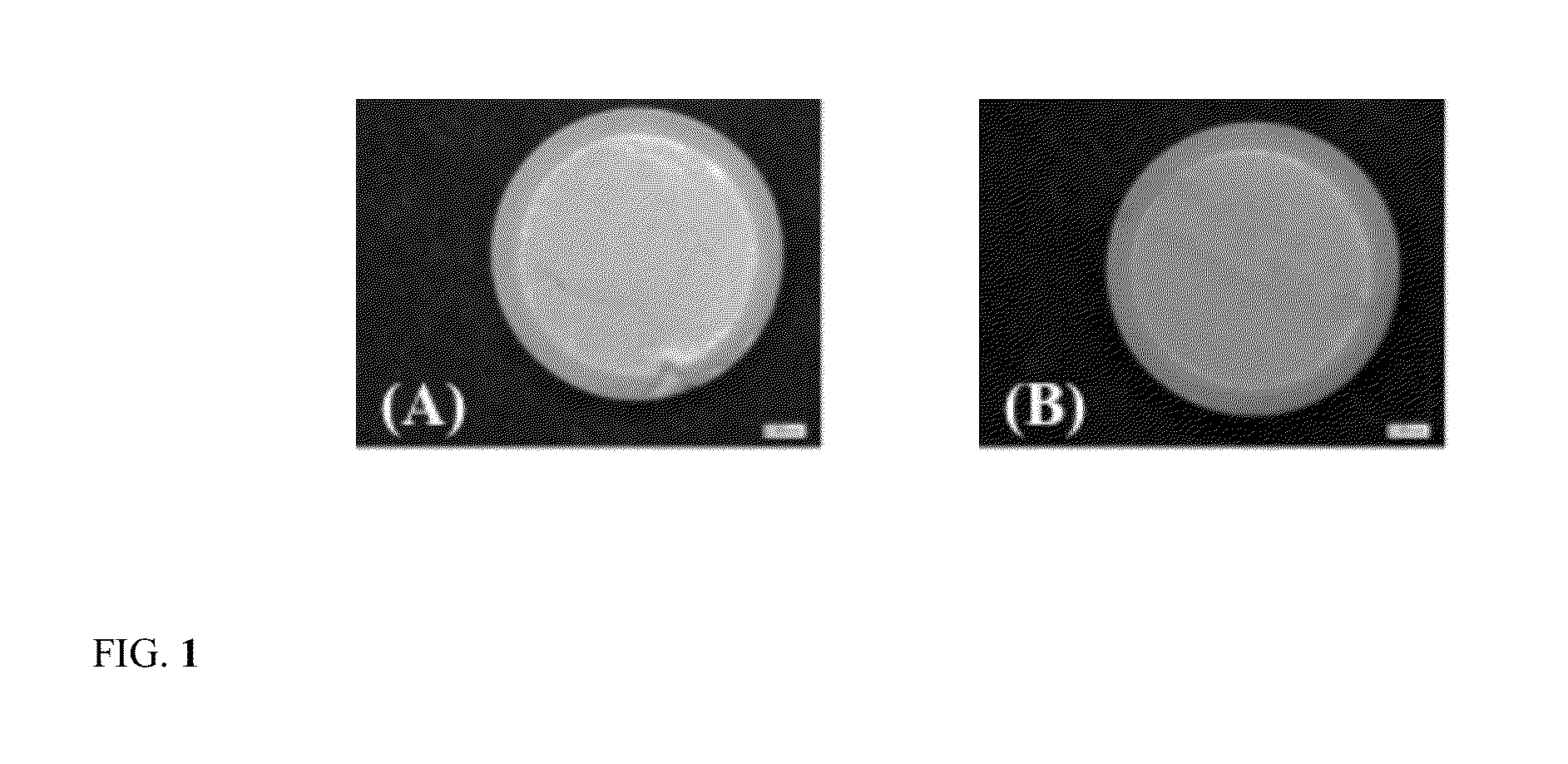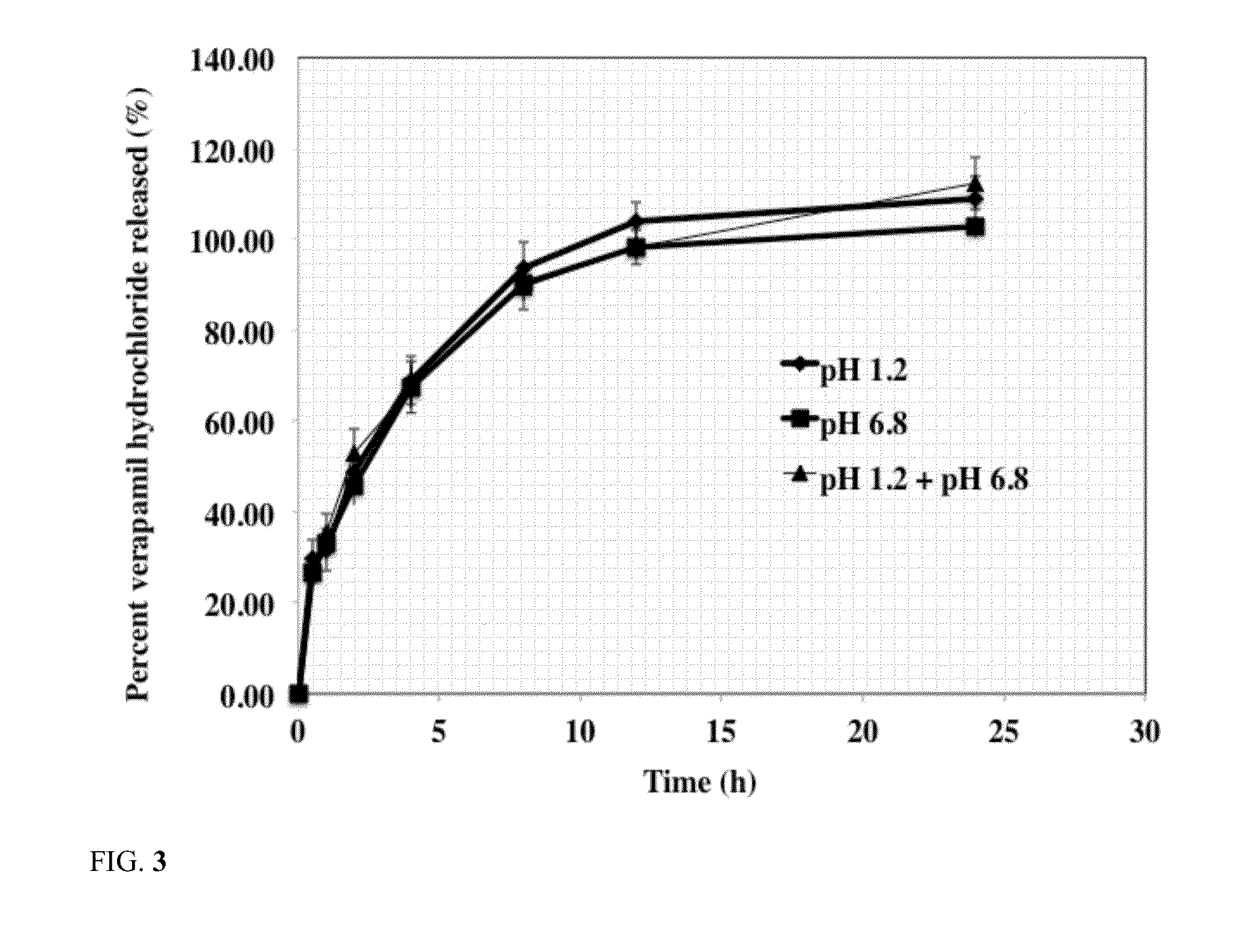Sustained release oral matrix and methods of making thereof
a technology of oral matrix and suspension, which is applied in the direction of antibacterial agents, extracellular fluid disorders, metabolism disorders, etc., can solve the problems of poor compressibility powder deformation, time-consuming, and affecting the effect of oral matrix,
- Summary
- Abstract
- Description
- Claims
- Application Information
AI Technical Summary
Benefits of technology
Problems solved by technology
Method used
Image
Examples
example i
Images of Tablets Formed Using Conventional Glassy Polymer in Comparison to Silicone PSA Polymer Tablet
[0040]The present composition is prepared using conventional polymer, ethyl cellulose that is an example of a glassy polymer with high glass transition temperature. Ethyl cellulose is an example of a polymer, which is widely used in oral controlled release tablet formulations for development of sustained release products. Tablets were prepared for this example by dissolving about 2 g of ethyl cellulose in about 7 ml of ethyl acetate. Acetaminophen powder was sieved and about 8 g of acetaminophen powder was added to the vial containing ethyl cellulose or silicone PSA solution. The vial was allowed to rotate for 4 h and the suspension obtained was poured onto a fluoropolymer coated side of the release liner. The suspension was allowed to dry overnight. Weighed 500 mg portions of the dried matrix was compressed using a 13 mm flat-faced cylindrical die in a Carver press at 6.4 kN force...
example ii
Mechanical Strength Evaluation of Silicone PSA Tablets
[0042]The mechanical properties of the formed tablet containing various weight percent of silicone PSA and acetaminophen from Example I may be evaluated using the procedure such as tablet hardness and tablet friability. The hydrophobicity of tablet surface may be evaluated using the technique of contact angle measurement. Higher contact angle values indicate hydrophobic surface. In order to measure tablet hardness, a tablet is placed between two holders. The holders move to apply force on the tablet. The force required to break a tablet is presented as tablet hardness value. An average of three measurements are shown in Table 2. Tablet friability is measured by placing three tablets in a revolving friability tester. In order to test friability of tablet composition, three tablets were revolved for 100 revolutions. The weights of the tablets before and after friability testing were obtained. % Friability value may be calculated fr...
example iii
Release of Acetaminophen from Silicone PSA Tablets
[0044]The effect of silicone PSA weight percent in tablet composition on release rate of acetaminophen from the tablets was studied using the following procedure. The results of acetaminophen release from silicone PSA tablets are shown in Table 3.
[0045]The release rate of these formulations were carried out using USP dissolution basket apparatus 1 (Vankel, Inc) using about 100 rpm stirring speed at about 37 C in about 900 ml of the dissolution medium. The dissolution medium used was simulated intestinal fluid with a pH of about 6.8. At predetermined time intervals, 1 ml of sample was withdrawn and was analyzed to determine acetaminophen concentration. Concentration of acetaminophen in the dissolution medium was determined using a HPLC method. A C8 column was used using mobile phase of 65% methanol and 35% water. Flow rate was 1 ml / min and the UV detection wavelength was 254 nm. The results are reported as average of six tablets. Resu...
PUM
| Property | Measurement | Unit |
|---|---|---|
| weight percent | aaaaa | aaaaa |
| weight percent | aaaaa | aaaaa |
| weight percent | aaaaa | aaaaa |
Abstract
Description
Claims
Application Information
 Login to View More
Login to View More - R&D
- Intellectual Property
- Life Sciences
- Materials
- Tech Scout
- Unparalleled Data Quality
- Higher Quality Content
- 60% Fewer Hallucinations
Browse by: Latest US Patents, China's latest patents, Technical Efficacy Thesaurus, Application Domain, Technology Topic, Popular Technical Reports.
© 2025 PatSnap. All rights reserved.Legal|Privacy policy|Modern Slavery Act Transparency Statement|Sitemap|About US| Contact US: help@patsnap.com



